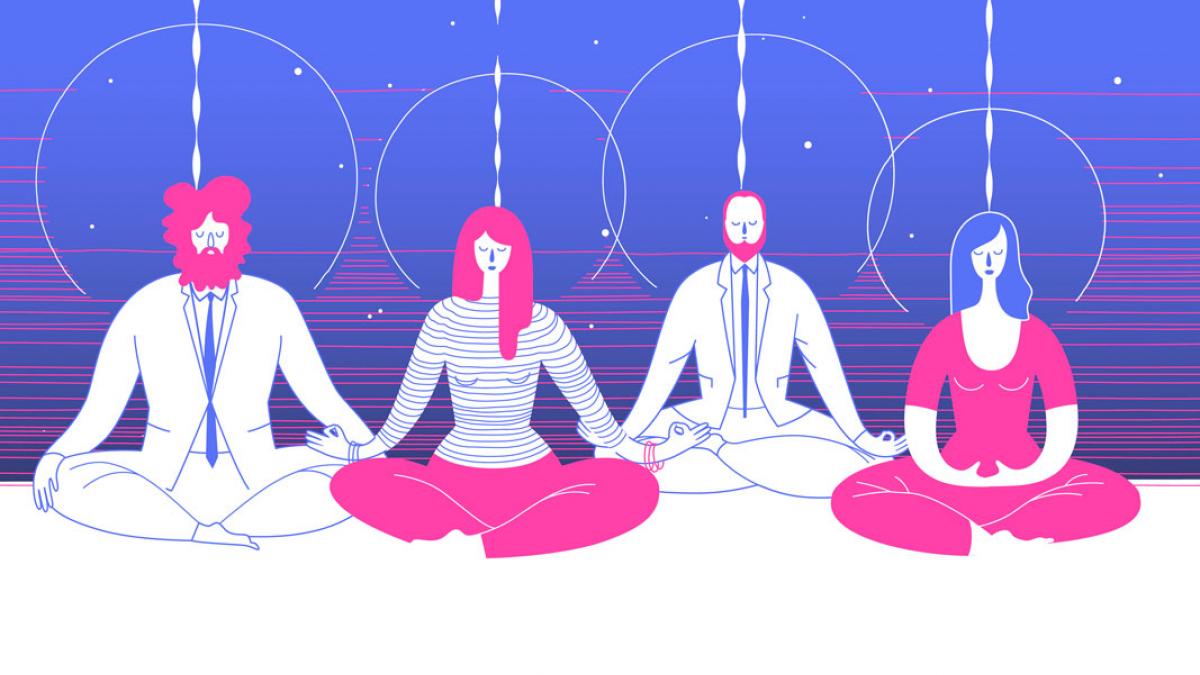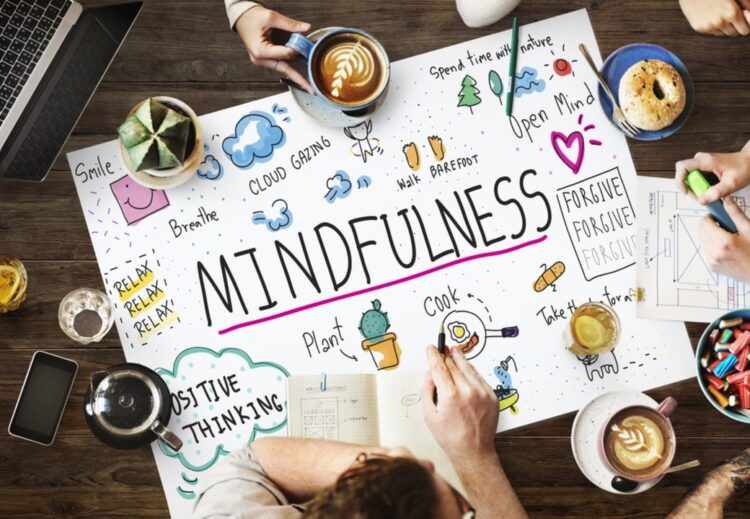Last Updated on October 14, 2022 by Editors Desk
Main highlights:
- What is Mindfulness
- Non-judgement as a virtue of life
- How keeping a beginner’s mind can be beneficial
- Learning the art of letting go
What is mindfulness
Maintaining awareness of our thoughts, feelings, bodily sensations, and immediate environment on a moment-by-moment basis is known as mindfulness.
Additionally, acceptance is a component of mindfulness, which means that we must observe our thoughts and feelings without passing judgment on them. For example, we must not consider that there is a “right” or “wrong” way to think or feel at any given time. When we engage in mindfulness practices, our thoughts focus on what we are perceiving in the present moment rather than on the past or the future.

People generally confuse mindfulness with a state of mind during meditation. Rather, mindfulness is more like a way of life.
By remembering, mindfulness allows us to take a step back and be in the present moment in any circumstance.
Although mindfulness doesn’t get rid of stress or other problems, it does give us more control over how we respond to difficult situations right now. This increases the likelihood that we will respond to stress and problems in a rational and sympathetic manner. However, practicing mindfulness allows us to be more deliberate about how we want to respond, whether that be quietly and empathetically or perhaps occasionally with controlled rage.
7 Pillars of Mindfulness

Nonjudgment – not applying evaluations
To practice “non-judgment,” one must first be aware of the constant, unconscious judgments we make of ourselves and others. What can we do to stop this automatism? without “labelling” anything, including people, things, or attitudes. Observing everything objectively.
Accepting those we disagree with through nonjudgmental behavior. It takes place when someone adopts a nonjudgmental attitude and ensures that all of his or her interactions are conducted without bias. This typically indicates that we pay more attention to what was said than to the person who said it.
Having a sense of equilibrium, the capacity to comprehend misconceptions and the capacity to accept others with whom one may differ are all characteristics of being non-judgemental. The words, decisions, actions, and emotions of one person reflect their behavior.
Patience – without urgency
Being patient is a virtue! At the very least, that is how the proverb goes. However, is it really so? According to one significant definition, patience is “the ability to accept or tolerate delay, inconvenience, or suffering without becoming angry or irritated.” Another quality is patience. We may practice being more tolerant of others and concentrate on improving our capacity for patience.
It is best to identify what we are truly discussing before looking at ways to increase patience. When life presents a challenge or a delay that deviates from expectations, patience (or its absence, impatience) arises. It’s rare to go through a day without running into anything that ruins our plans, so we might say that “interferences” or “disruptions” are a normal part of life; to expect otherwise will make it difficult to be patient.
Beginner’s mind – openness, curiosity
You can accept unknown situations when you are curious, which increases your chance of experiencing delight and discovery. Curiosity is a state of active curiosity or truly wanting to know more about something.
People who are curious are naturally curious and seek out information. Their thoughts are constantly engaged. The mental workout brought on by curiosity strengthens your mind since it works like a muscle that gets stronger with continued use.
You can accept unknown situations when you are curious, which increases your chance of experiencing delight and discovery. Curiosity is a state of active curiosity or truly wanting to know more about something.
People who are curious are naturally curious and seek out information. Their thoughts are constantly engaged. The mental workout brought on by curiosity strengthens your mind since it works like a muscle that gets stronger with continued use.
A beginner’s mind entails viewing the world from a novice’s perspective. The term is translated from the original Shoshin, a word that originates in Zen Buddhism. It implies that you approach each scenario you find yourself in as if it were the first time.
Trust – in one’s inner wisdom
Every person is affected by what is going on in the world. It is normal to check in and assess how we fit into the world at large. When we lose sight of our inner compass, which we can rely on to direct us on a course most consistent with who we are, a problem results. When we ignore that sensible voice and let our ego take control of our life, the problem swells into a monstrous monster. True agony begins in this situation.
A general assessment of your likelihood of completing a task or reaching a goal based on previous experiences is called self-confidence.
Self-confidence is the belief in one’s skills to plan and carry out the actions necessary to manage potential situations.
Your view of how probable it is that you will succeed at any given endeavor depends on how you see your talents, abilities, and judgment.
Non-striving – a process rather than an outcome
Within the guidelines of mindfulness, being oneself and having faith in yourself is essential. Recognizing that you don’t need to change or improve yourself in order to be “different” or “better” is the practice of non-striving. Accept who you are and take solace in it. This enables you to focus on the current-moment issues that are important.
Allowing what is to be what it is in the process of trust.
Giving up control and expectations is necessary. It entails having the freedom to act appropriately when called for or to remain passive when it would be most beneficial. Knowing that everything that happens is only a part of life’s path allows one to trust without worrying about it.
Acceptance – reality as it is
You might be limited in every aspect of your life by a lack of self-acceptance. It has an impact on your self-confidence and may keep you from realizing your full potential.
High levels of self-acceptance make people more tolerant of criticism. They are aware that it’s acceptable to accept oneself while simultaneously making an effort to continually better oneself.
The act of accepting oneself and all of your personality qualities exactly as they are is known as self-acceptance. Whether they are favorable or unfavorable, you accept them. These qualities comprise both your physical and mental makeup.
Knowing your value extends beyond your own traits and behaviors is a necessary component of self-acceptance. Radical self-acceptance is another name for this.
Letting go – getting unstuck

It’s easy to become weighed down by our past mistakes and misfortunes in life when navigating life’s ups and downs. The primary motivators of our existence, fear, and worry have the power to subtly sabotage our happiness and well-being without us ever realizing it.
The secret to leading a happy and successful life is to master the art of letting go. This is not meant to imply that we should not be aware of the difficulties in our own world. The opposite is true. It entails considering things in a way that enables us to process what took place, draw lessons from it, and then put it behind us.



